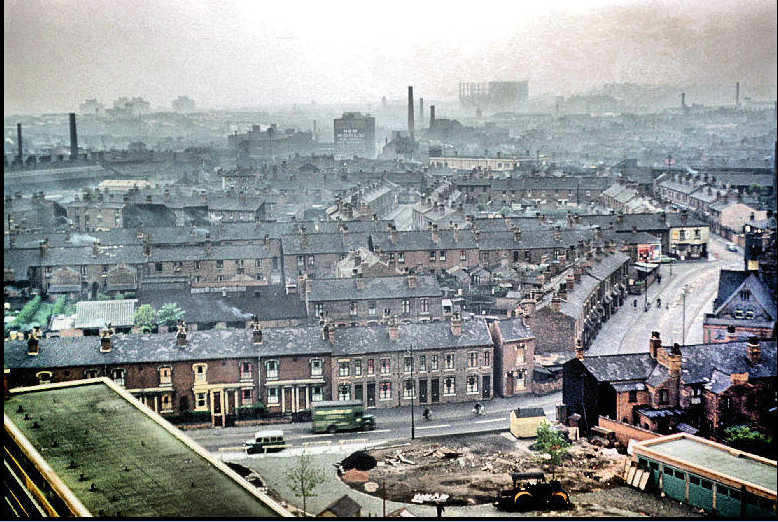A tutor in Geography in the extra-mural department of Birmingham University, Phyllis Nicklin (1909-69) left behind for the University an extraordinary archive of 35mm slides that she had taken, to use in her classes, in the 1950s and 60s. Her subject was the city which she lived in all her life and her photographs documented the enormous changes in the city's appearance and physical fabric, as it underwent a process of transformation unprecedented in British cities.
Many of the images show the nineteenth century fabric, typically of red brick terraces and small factories, juxtaposed with shockingly new modern forms: housing tower blocks, shiny office buildings, wide dual carriageway roads. Birmingham's urban renewal was going on apace. For many seeing Nicklin's pictures now, they evoke a nostalgia for simpler times of shared values and community. But however ordinary their purpose, that of a record and a teaching aid, the most compelling images picture a city in transition, in a world then filled with optimism about the modern and erasure of the outdated past. Many have an atmospheric quality, accentuated by their Kodachrome colour cast, and like the best documentary photographs transcend their matter-of-fact origin to have a significance far beyond their local context.
This rich archive is the subject of a small interactive exhibition- Phyllis Nicklin Unseen- currently to be seen at the Birmingham Museum and Art Gallery, set up by the website brumpic.com. A larger exhibition is planned, and see the archive of 446 scanned images on the Birmingham University website, at epapers.ac.uk/chrysalis.html.


